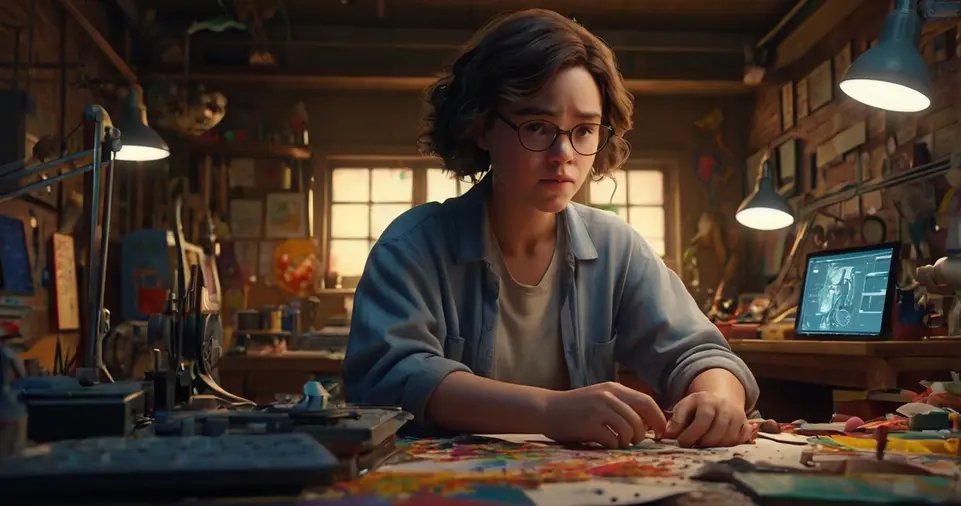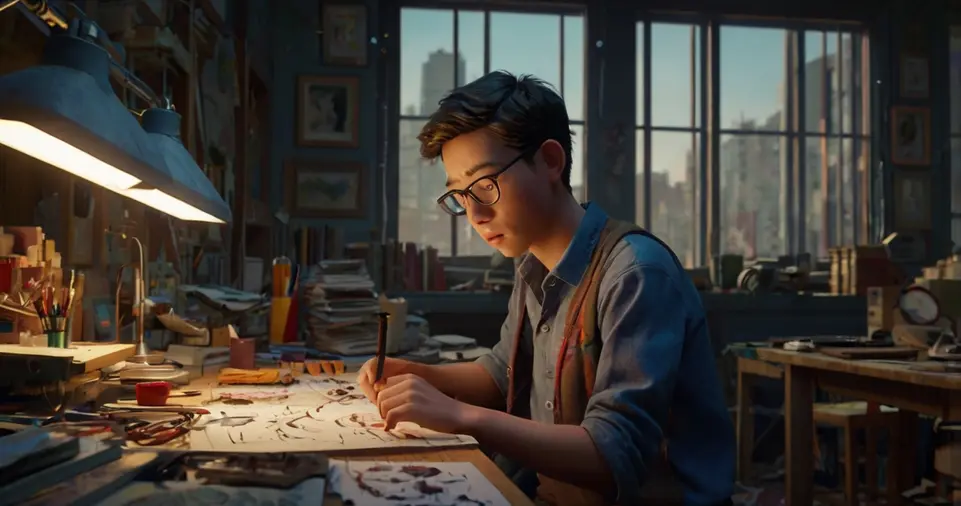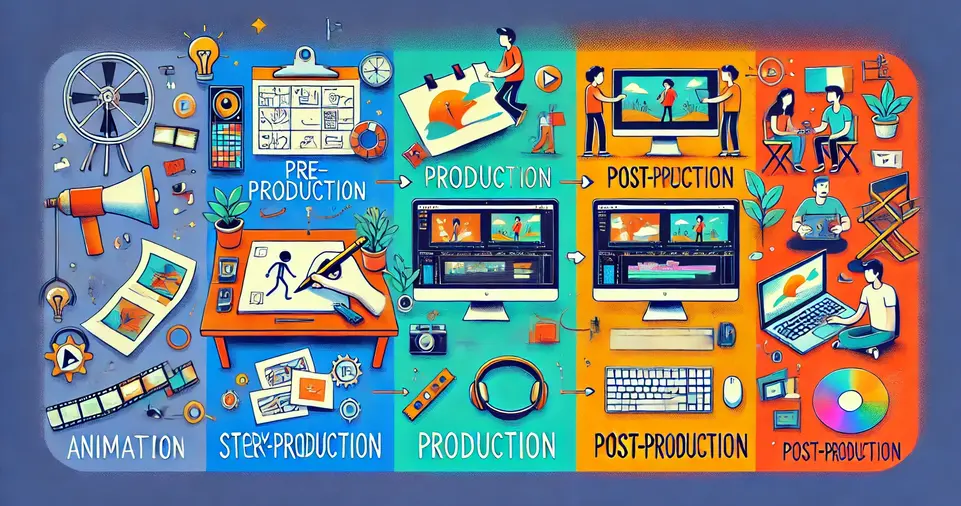Animation is a captivating art form that brings stories, characters, and ideas to life.
Whether you’re a beginner exploring this exciting medium or an aspiring animator planning your first project, understanding the time it takes to create an animation is crucial.
The production timeline varies depending on several factors: the type of animation, the complexity of the project, the tools used, and the animator’s skill level.
Animation can range from a simple 2D explainer video completed in a few weeks to a feature-length animated film requiring years of work.
For beginners, the process might seem daunting at first, but breaking it into manageable phases—pre-production, production, and post-production—makes it easier to grasp.
This guide will take you through each phase of animation, explain how different styles impact production time, and offer practical tips for improving your efficiency.
By the end, you’ll better understand how to plan your projects, set realistic timelines, and tackle your animation journey confidently.
Understanding Animation Types and Their Timelines
The type of animation you choose directly impacts the production time. Each animation style has unique requirements, workflows, and levels of complexity.
2D Animation: Simple Yet Time-Intensive
2D animation involves creating characters and scenes in two dimensions, often using software like Toon Boom Harmony, Adobe Animate, or Krita.
This style is widely used for explainer videos, TV shows, and YouTube animations.
- Estimated Time: For a beginner, one minute of polished 2D animation may take 1-3 weeks. Professionals can reduce this time significantly with experience and shortcuts.
- Factors Impacting Time: Detailed character movements, background designs, and frame-by-frame animations can increase production time.
3D Animation: Immersive but Complex
3D animation includes creating models, rigging them for movement, and animating in a three-dimensional space.
Software like Blender, Maya, or Cinema 4D is commonly used.
- Estimated Time: A minute of high-quality 3D animation might take 4-8 weeks or longer due to intricate steps like modeling, rigging, lighting, and rendering.
- Factors Impacting Time: Photorealistic textures, fluid simulations, and advanced lighting setups add significant time to production.
Stop-Motion Animation: Hands-On and Labor-Intensive
Stop-motion animation uses physical objects or puppets that are photographed frame-by-frame to create movement.
Famous examples include Wallace and Gromit and The Nightmare Before Christmas.
- Estimated Time: Producing a few seconds of stop-motion can take days, and a short film may require several months.
- Factors Impacting Time: Manual setup of scenes, lighting adjustments, and photographing every frame make this process meticulous.
ALSO READ: What Makes Animation Different From Live-Action Films?
Breaking Down the Animation Process: Phases and Timelines

Animation projects can be divided into three main phases: pre-production, production, and post-production.
Each phase has its own tasks and challenges, impacting the overall timeline.
Pre-Production: Laying the Foundation (1-3 Weeks)
Pre-production is where your ideas take shape and become a structured plan.
Scriptwriting (1-2 Days)
Start by writing a compelling script that outlines the story, dialogue, and key scenes. A well-crafted script is essential for maintaining focus during production.
Storyboarding (3-7 Days)
Storyboarding involves creating visual representations of each scene. These sketches act as a blueprint for the animation, helping you plan camera angles, character movements, and transitions.
Animatic Creation (1-2 Weeks)
An animatic is a rough animation of the storyboard, synced to the script. It helps test the pacing and timing of scenes before committing to detailed animation.
Production: Bringing Ideas to Life (Varies)
Production is the most time-consuming phase, where characters, environments, and actions come to life.
Character Design and Modeling
- 2D Animation: Drawing characters can take 1-3 days each, depending on their complexity.
- 3D Animation: Modeling and rigging a character in 3D software can take 1-2 weeks per character.
Background and Scene Design
Creating detailed backgrounds or environments can add several days to weeks, especially for complex or dynamic settings.
Animating
Animating involves creating keyframes (major movements) and in-betweens (smooth transitions).
- 2D Animation: Detailed frame-by-frame work can take 6-12+ hours per second of animation.
- 3D Animation: Animation is faster after rigging but requires additional time for physics simulations and rendering.
Post-Production: Polishing the Final Product (1-2 Weeks)
Editing and Effects
Combine all animated scenes, add visual effects, and refine transitions. Editing typically takes 3-5 days.
Rendering
Rendering is unique to 3D animation, converting 3D scenes into 2D images. This process can take minutes to hours per frame depending on resolution and complexity.
Sound Design
Adding voiceovers, sound effects, and music brings your animation to life. This step takes 3-7 days.
Factors That Impact Animation Production Time

Several variables can influence how long it takes to complete an animation project.
Team Size
A solo animator will take significantly longer than a team where each member specializes in a specific task, like character design, rigging, or editing.
Skill Level
Beginners typically require 2-3 times longer to produce the same content as experienced professionals. Practice and familiarity with tools will improve your efficiency over time.
Tools and Software
Using advanced software or pre-built libraries can significantly reduce production time. Open-source options like Blender provide powerful features without hefty costs.
Project Scope
Short, simple projects like 30-second explainer videos may take 3-6 weeks, while feature films often require years of work.
Practical Tips to Streamline Your Animation Process
Start Small
Begin with short projects to build skills and confidence. A 10-second animation is manageable for beginners and provides valuable practice.
Master Your Tools
Learn keyboard shortcuts and explore features in your animation software to speed up workflows.
Reuse Assets
Save time by creating reusable templates for characters, backgrounds, and animations. Many software programs also offer asset libraries.
Prioritize Keyframes
Focus on animating key actions first, then fill in the in-between frames (also known as “tweening”). This approach ensures smoother animations.
Seek Feedback Early
Share animatics or drafts with peers for constructive feedback, saving time on corrections later.
ALSO READ: How to Create Your Own Animation Story: Tips for Beginners
Conclusion: How Long Does Animation Take?
Animation is a rewarding but time-intensive process, especially for beginners.
A 30-second animation might take 3-6 weeks of dedicated effort, while a feature-length film could span years.
By understanding the phases of animation, choosing the right tools, and honing your skills, you can streamline your workflow and achieve impressive results.
Whether you’re creating a simple explainer video or an intricate short film, the key is patience, practice, and a solid plan.
Start small, stay consistent, and watch your animation skills grow over time!

